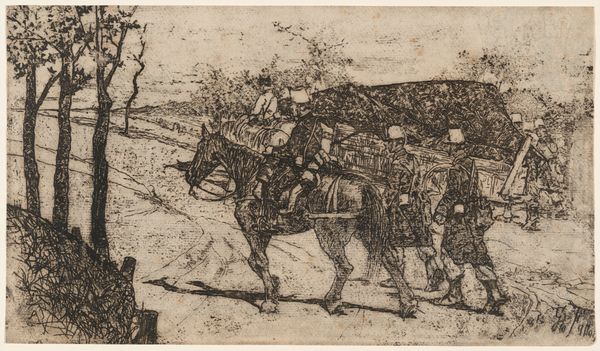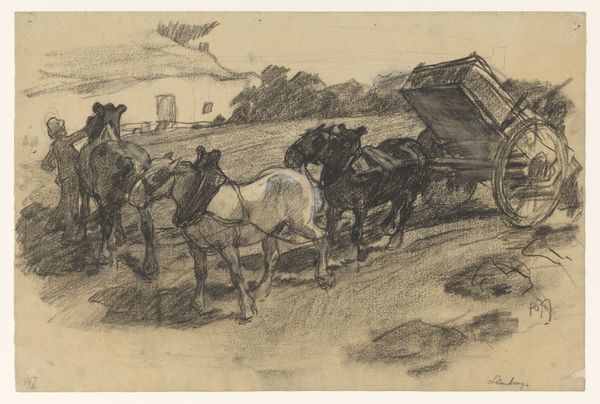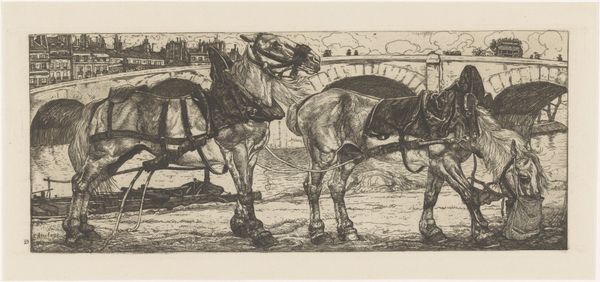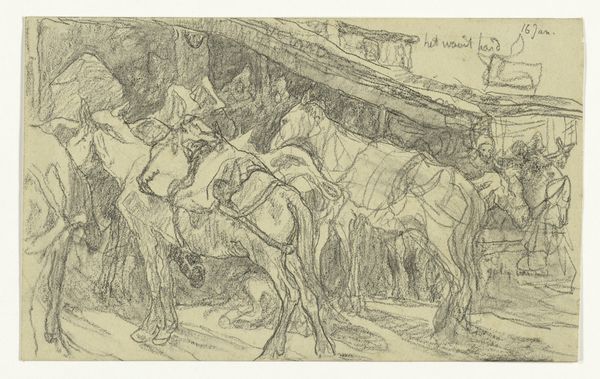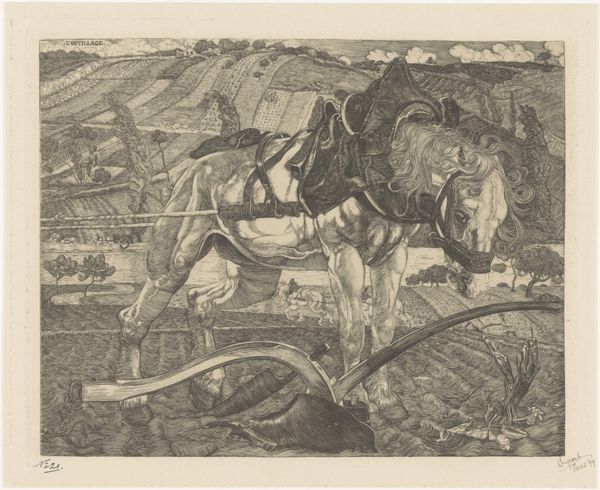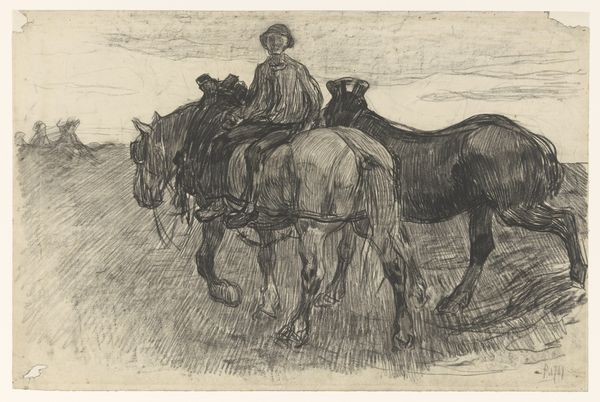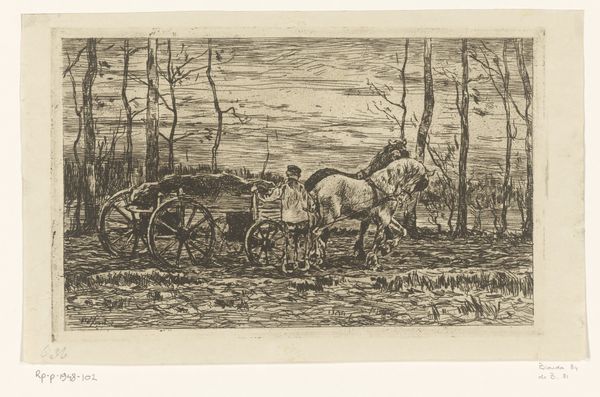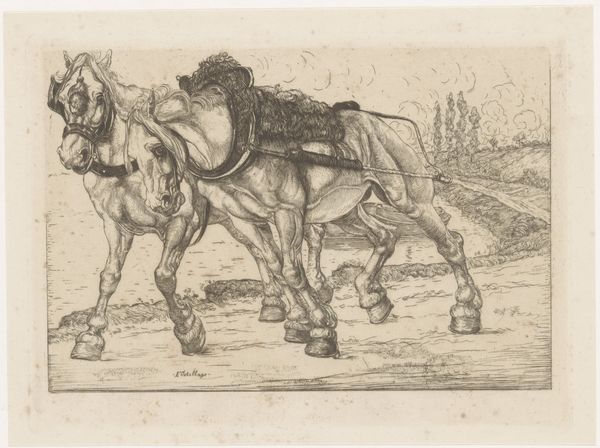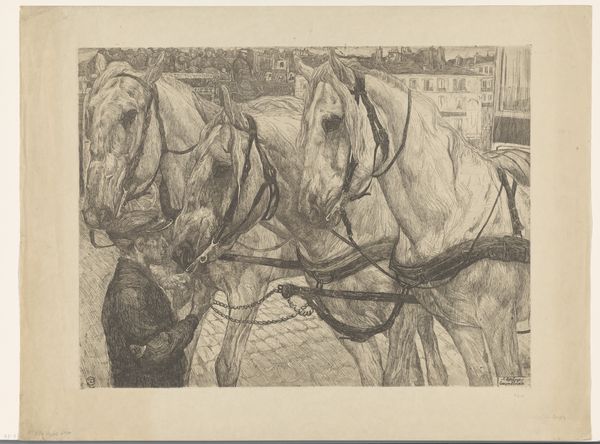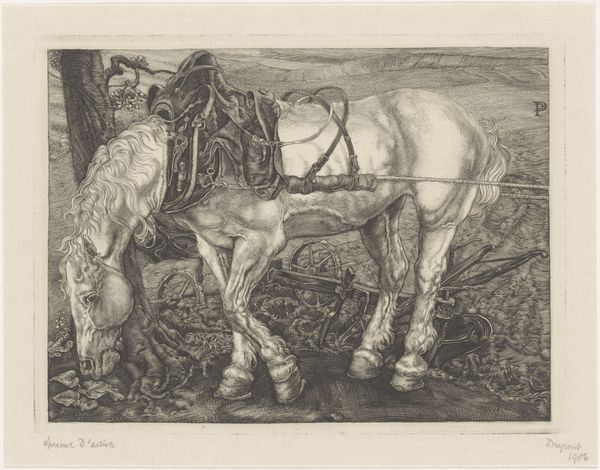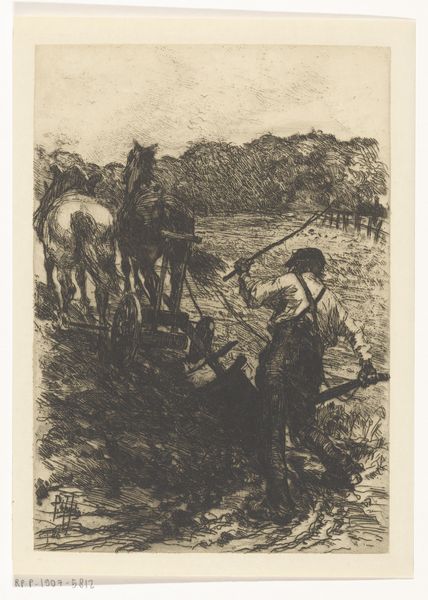
drawing, paper, ink
#
drawing
#
medieval
#
narrative-art
#
landscape
#
figuration
#
paper
#
ink
#
history-painting
Copyright: Public Domain
Fritz Boehle created this etching, Kneeling Knight at the Well, rendering an idealized vision of medieval chivalry. Boehle's choice of etching is significant. The process involves drawing with a needle on a metal plate covered with wax, which is then immersed in acid to create the recessed lines. Ink is applied, the surface wiped clean, and the image is transferred to paper under pressure. The resulting print bears a unique texture, and in this instance a certain tonal ambiguity - an atmospheric quality that is difficult to achieve in other media. The linear precision would have required skilled craftsmanship. We know that Boehle was a member of the Willingshausen artists' colony. There, he would have encountered traditional craftsmanship as well as a romantic nationalism, perhaps explaining his interest in the medieval knight. Ultimately, Boehle’s print reminds us that even seemingly straightforward images are the product of material choices, processes, and cultural contexts. It challenges the divide between fine art and craft, inviting us to consider the labor and skill embedded within.
Comments
No comments
Be the first to comment and join the conversation on the ultimate creative platform.

